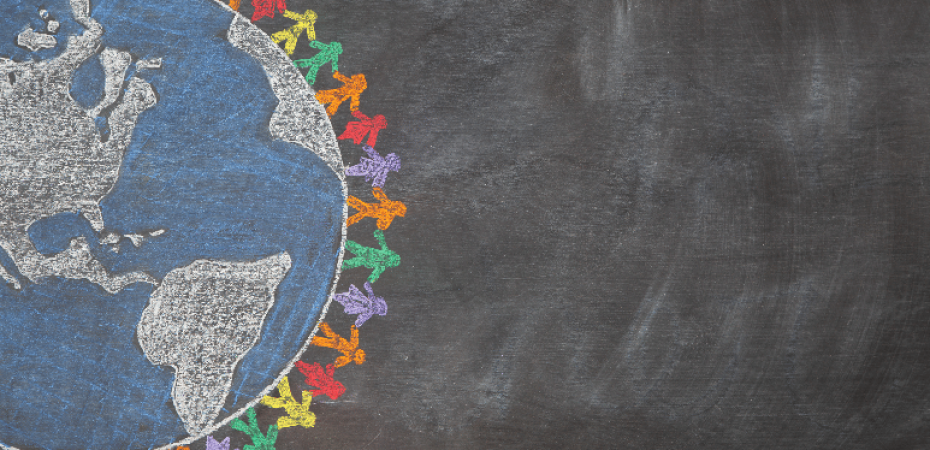What is global philanthropy?
Some would say that global philanthropy refers solely to individuals or institutions like foundations that make grants or donations outside of their country. That’s a bit misleading because it leaves out the importance people place on building and strengthening global communities. The way we think about global philanthropy at Faircom New York focuses on the ways in which donors want to work together to amplify their impact within and across borders. We see that our communities are no longer limited to a particular neighborhood, city, or country, but they have expanded globally – particularly among the high net worth audiences we engage with a lot, who may travel, have international homes or businesses, and so on. That wealth is very mobile. We see people are connected and linked by interest. So, global philanthropy is concerned with the power of collective giving as engaged donors unite through these broad, international communities.
How does Faircom New York help nonprofits with global philanthropy?
A lot of our department’s clients historically have been based outside of the United States, and they came to us with an interest in building their community of giving across borders, connecting people based on their passions, their interests and their desires for impact. While that’s where we started, we’ve expanded our work with groups based in the United States that want to connect with more globally engaged, mobile donors. All the services that Faircom New York offers, whether it’s through direct mail, digital marketing, support for brand awareness and communications, major or mid-level gifts – really any fundraising work! These can all be at play in leveraging strategies to amplify global philanthropy.
What type of people do you generally reach with global philanthropy initiatives?
People of all kinds, organizations of all kinds, foundations, and corporations too! Often when people hear the word “philanthropy”, they think about really wealthy people making really big donations. People think about transformative giving in the context of six, seven, or higher figure gift – and I won’t lie, that is definitely part of it, and a big part of the work that I do with my team.
But even while I focus a lot of time at the top end of the donor pyramid, what I like to stress, in our team and with our clients alike, is that anyone, at any level of giving, can make a gift that is transformative to them – because we should care just as much about the donor and the impact giving has for them, and what it means for their ability to achieve certain goals or a specific vision. For some people without the sky-high capacity of the very or ultra-high net worth audiences, a transformative gift might be a thousand or even a hundred dollars. And it is important that we honor that and celebrate their commitment. The respect we show to donors at all levels is indicative of a broader culture of philanthropy, and we should be focused on how we can give all individuals, at all levels of giving, the opportunity to make an impact.
How do you find major donors?
Traditionally, we talk about what we call the LAI approach: Linkage, Ability and Interest.
Linkage means that a donor or prospect – so, a foundation, corporation, or individual – has an existing connection to your nonprofit organization, in some way. It could be through a board member, someone who has been to an event you hosted, or another donor that could be a peer connector. They may already be a donor to you as well, but they might give at a lower level. In other words, this donor or prospect has a connection to the organization already that will help you open the door.
Ability is whether someone has the capacity to make a major gift or not. Importantly, what counts as a major gift can be different for every organization, but we often see a threshold of at least $5,000 or $10,000. Ability asks whether someone has the capacity to give at that level at some point in the future. It’s not necessarily going to be their first gift, but they have the capacity to upgrade to that point.
The last piece, interest, is like the secret sauce. They are charitable in nature, philanthropic in nature, but most importantly they are committed to a similar mission and purpose. That way, you know they have an affinity for the work that you’re doing.
In general, a lot of people focus on the ability part of major gifts, but the interest part is the most important. Your best donors are going to be people who are already giving to you at some level, who are excited about what you do (maybe shown through giving to other groups if they aren’t yet a donor to you), who show that inclination and affinity to give. And the best way to predict whether they will become major donors is that piece, not necessarily the financial piece.
How do you retain major donors?
We try to instill the idea of a culture of philanthropy and linking that into donor cultivation. A culture of philanthropy, which I started to touch on before, means that you don’t treat your donors like an ATM. They are not there to just open their wallets, write a check, give you some cash. They want to be a partner in your mission, and you have to treat them as such. They are just as important to making the work happen as the person in the field.
When we take this partnership approach to sharing information and keeping your audience on the “inside” of what is happening in your programs, among other activities, it’s about building a stronger relationship with the donor over time. Once they’ve made a contribution, you have to thank and acknowledge that gift. Not just writing a thank you letter, but continuing to report back, inviting them to see a program, asking them for advice on what the organization should do to reach out to other donors or to build visibility in the community. It’s really about making it a two-way street. That’s the kind of attitude you need to take to keep your major donors and build meaningful relationships.
Has COVID-19 impacted or changed your approach to major donors?
COVID-19 has allowed for (or required!) more personalized use of online technologies, which presented some unique opportunities. It wasn’t all bad, in terms of how it helped our strategies grow.
At the most basic level, you would hold Zoom meetings to check in on your donor’s giving, to talk about where the organization is going, to make sure they’re going to continue to make an impact and keep their doors open as much as possible. You also checked on them personally, because as we all know, it has been hard for everyone in different ways. This personal connection has been another important piece of keeping relationships not just consistent but deepening throughout the pandemic.
Also, since this pandemic, everyone has their phone in their pocket. So, some nonprofits have been able to take quick videos or do virtual tours to show programs, which is great for donors who don’t normally have the opportunity to see the field in person. We could give donors the feeling of impromptu access, which could feel more authentic and richer in many ways than formal tours or videos. COVID-19 opened this new way of thinking about how we can engage and bring programs to donors, and I think that was pretty great – and I will take that win alongside other parts that have been more difficult.
One big challenge, it has been much harder to build new relationships because everyone is exhausted, everyone is trying to juggle a million different things. People are at home with their kids and trying to work at the same time. Some have even been teaching their kids, everyone’s trying their best to stay healthy if possible. They’re trying to find a balance between worrying and getting out in the world. The last thing most donors were interested in was trying to engage with new groups. So, nonprofits have mainly focused on maintaining relationships with the existing audience, and vice versa, donors were more concerned with maintaining their support or digging deeper to help nonprofits they already had a relationship with.
Are in-person events still relevant for nonprofits?
In-person events are definitely still relevant for nonprofits. People are still excited about getting together. Of course, it depends on the audience. Everyone’s level of caution is different, and in-person events may not be something that all your donors are comfortable with. But I’m seeing a return of dinners, parties, and everything else. The return of face-to-face is there, and most people and nonprofits are happy with it.
However, I would say that virtual events are also very much still there. That goes back to what I said earlier, but one of the things I didn’t touch on: COVID-19 opened a set of tools that we didn’t have, or that we had but weren’t using to the fullest, and that also applied to events. Necessity being the mother of invention, we had to use the virtual tools which also included the virtual galas, wine tastings, flower arranging classes – so many things! And now that we know how to use them, they are an integral part of the fundraising mix and the overall strategy. Virtual tools are always great for donors who don’t want or can’t come to in-person events, they’re great for reaching donors who may be hundreds of miles away from you, especially for groups that have programs abroad. They can also have a lower cost to entry, less rigidity on guest count caps (depending on the format), so you can also reach more people that might not be part of your traditional in-person events model.
Is there anything else you would add in summary?
Despite the COVID-19 pandemic, global philanthropic strategies and nonprofit fundraising in general have been flexible and nimble to meet the moment – we’ve been so lucky to partner with amazing organizations that have accompanied us on this journey to reinvent or evolve our approaches to this work. And it has been a privilege to find ways to allow donors to come together and work collaboratively on a common vision. Faircom New York can offer expertise to nonprofit organizations to help them in this regard, and I hope that we will be able to partner with more organizations on these kinds of exciting programs in the future.
Please contact us if you want to build a community of donors that extends beyond borders, and if you aim to connect people based on their passions, interests, and desires to make an impact.




